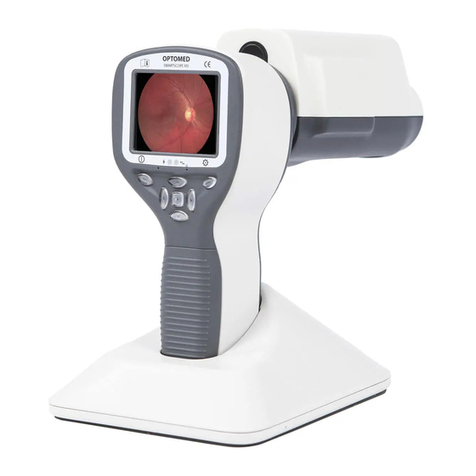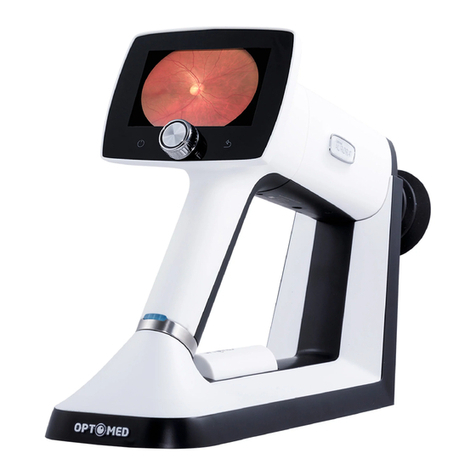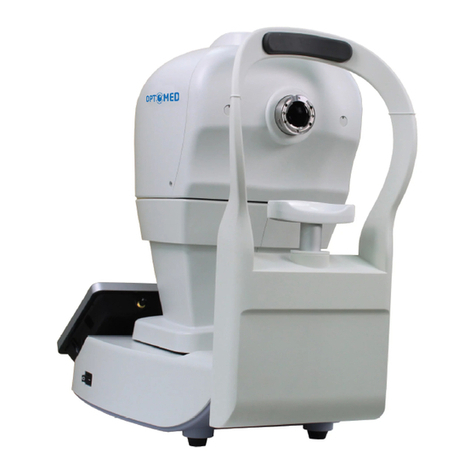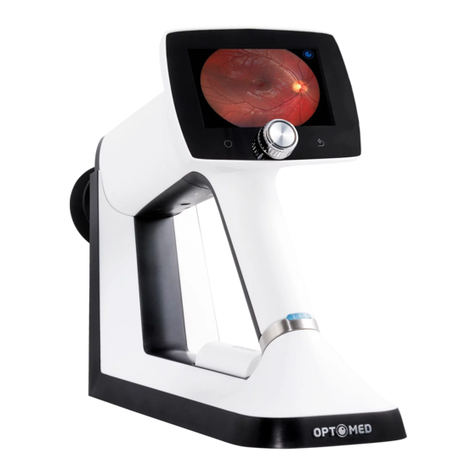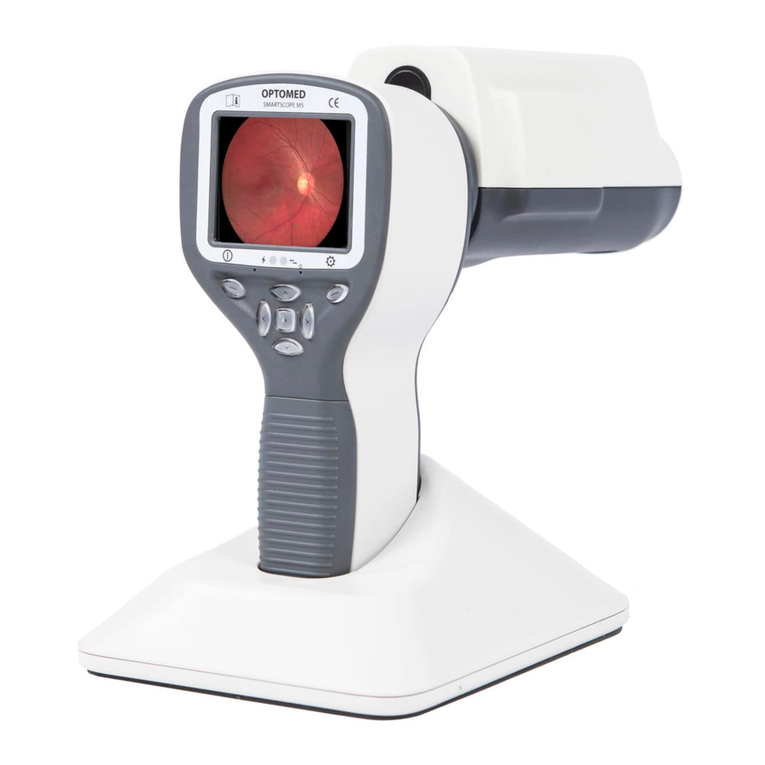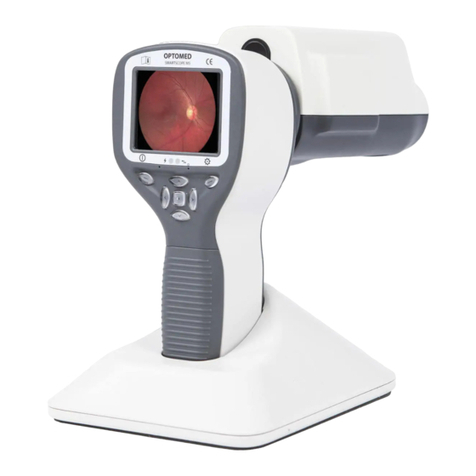Page 4 Ver. D
1.4 Proper instrument use
1. Optomed Halo is a medical device; it must be operated by properly
trained and qualified person(s) only. The operation should be
supervised by a physician. If abnormal behavior is observed due to EM
disturbances, please relocate the device accordingly.
2. Please be sure to read the user manual to understand the safety
precautions before operating this device.
3. Always enter patient information first.
4. Prepare patient contact surfaces (forehead and chin rest) according to
the cleaning method in this manual.
5. Instantly turn off the power switch of this instrument and disconnect
the power cable if uncertain problems arise.
6. Clean ocular lens frequently to ensure good image quality.
7. Adjust the height of motorized adjustable table properly to ensure
patient’s comfort during the examination.
8. Align the patient’s eye position to the canthus indicator mark on the
chin and forehead rest assembly.
9. Dim the room lights to allow natural dilation of the patient’s pupil and to
provide a comfortable visualization of the fixation target without glare.
10. Inspection of the system’s functionality before use whether any repair
is needed.






